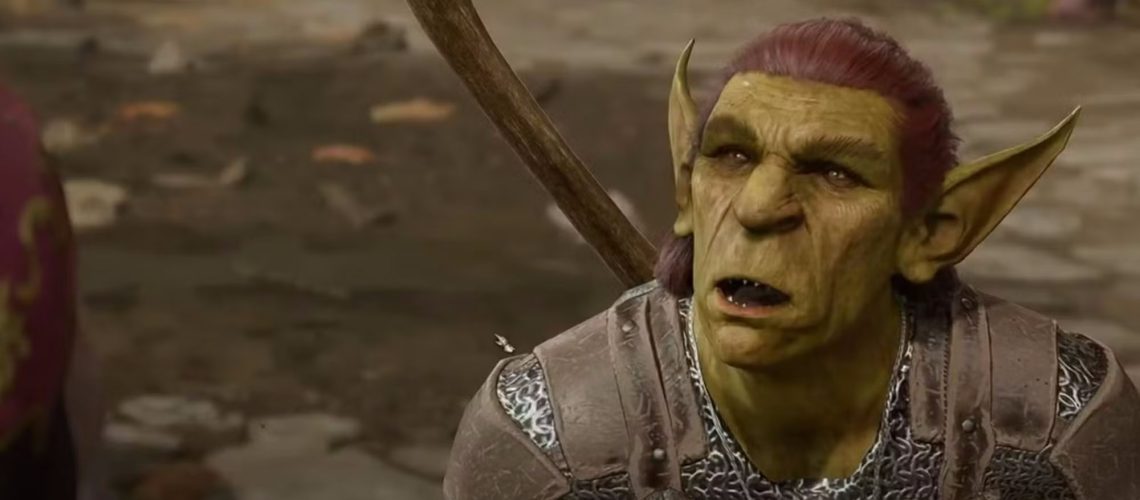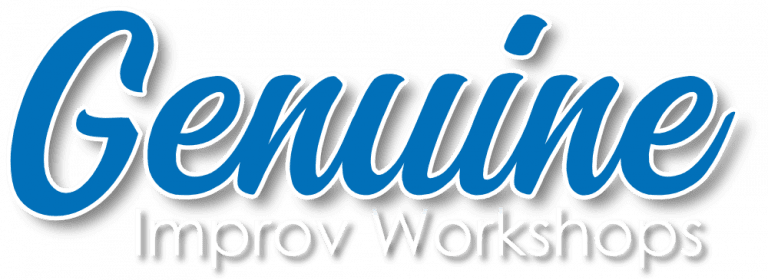The Goblin Problem
You’ve just jumped into an improv jam at your local theater. The lights come up and the music plays. Someone comes out and says, “we’re going to do a montage for you, can we get a suggestion?”. After ignoring “pineapple” and “dildo”, an audience member yells “monster”. Everyone shrinks to the back line, and then you come out and start doing your best goblin voice.
“Grognak, get the goblin potion! We have to make goblin stew for the goblin ceremony!”
You and your scene partner spend several minutes brewing a goblin potion, but neither of you is ever quite sure why you’re brewing the goblin potion, or what a goblin ceremony is. The scene seems like it should be fun! You’ve got funny voices! You’re adding a bunch of clever ingredients that it seems like goblins are into! You’re coming up with all kinds of fun goblin specifics! You start getting into the complexities of goblin culture–but the audience just isn’t having it. Someone shark edits the scene while shaking their head and you’re left wondering what the hell just happened.
My friend, you’ve just encountered the Goblin Problem.
The Goblin Problem is a thing that plagues all of improv, but new improvisers are particularly susceptible to its power. We love playing non-human characters. It’s fun! Who doesn’t love being a dog in a scene, or coming out and perching on a chair and doing your best impression of a peregrine falcon cleaning itself? Where it becomes a Goblin Problem is when we forget to make our non-human characters… human.
Ground Your Goblins
I’m not saying “don’t play goblins”. I’ve played a lot of goblins. I’m saying you gotta ground your goblins. While I don’t believe the term “grounded” has anything to do with the concept of “common ground”, it’s a useful way to think about it for characters in improv.
I used to think that playing grounded meant that I had to be boring. I had to play my characters very realistically, not letting their emotions get the best of them. I had to speak softly, slowly, and move around the stage very “dramatically”. I had to play human beings. I couldn’t be grounded playing a whale on the moon, that’s impossible! I later realized that grounding is more about whether your character behaves in a relatable way and has recognizable emotions that audiences can latch onto and understand.
A goblin doing goblin things for goblin reasons isn’t very fun to watch or play. Why? Because we don’t live in a goblin society with goblin rules and goblin motivations. You’ve gotta find a bridge (or common ground) linking whatever fantastical world your characters inhabit to our real world. In my experience, the easiest bridge to build with the audience is an emotional one.
What do audiences have in common with a goblin who steals trinkets from adventurers because the goblin king needs gold to power his super weapon and destroy the human kingdom of Falsted? Probably not very much.
What do audiences have in common with a goblin who steals trinkets from adventurers because he just wants to be noticed? Probably a lot! Who hasn’t acted out just for the attention before?
The solution to the Goblin Problem, then, is to play a goblin, who does goblin things, for human reasons. Next time you’re in an improv scene playing a non-human1Here’s a big helpful thing to remember: human characters also need human reasons to do stuff. All of the tips in this blog post apply to all of your characters. character, give it a try.
Afterthought: Mapping Scenes
Another benefit of playing non-human characters with human traits is that you’ll often find yourself in mapping scenes. Mapping scenes are ones where we are take one idea and filter it through another idea, mapping (or relating) concepts from one idea to the other. Sure, we could do the work of getting the audience to understand the intricacies of our invented goblin society and its various social customs, but wouldn’t it be easier if we just… didn’t have to do all that?
Maybe we learn that goblin culture is a lot like office culture, with all the red tape and rigamarole that comes with it. Everyone in goblin culture starts out as a potion stirrer, but Overseer (supervisor) Gilgok was killed in a barbarian raid last week. Now there’s a corner hut (office) open for the new potion overseer. Grognak the potion stirrer is standing around the mud fountain (water cooler) talking about the promotion opportunity with another goblin when the goblin chief comes in and says he needs a new potion by 5 PM so he can impress the regional goblin king who’s coming to visit, as he’s thinking about merging their smaller tribe into his bigger one (corporate merger). Grognak sees this as his chance to make a good impression and get Gilgok’s old job.
This is all much plottier than I prefer my scenes to be, but it’s also easier and more fun to play than trying to invent a whole goblin society while also finding something for the scene to be about. And, most importantly? Audiences understand it! People laugh cause they recognize things–the writers on The Big Bang Theory knew this and that show ran for 279 episodes off this one stupid trick! While I encourage you to aim higher than that with your improv, sometimes, it really is just that easy.





